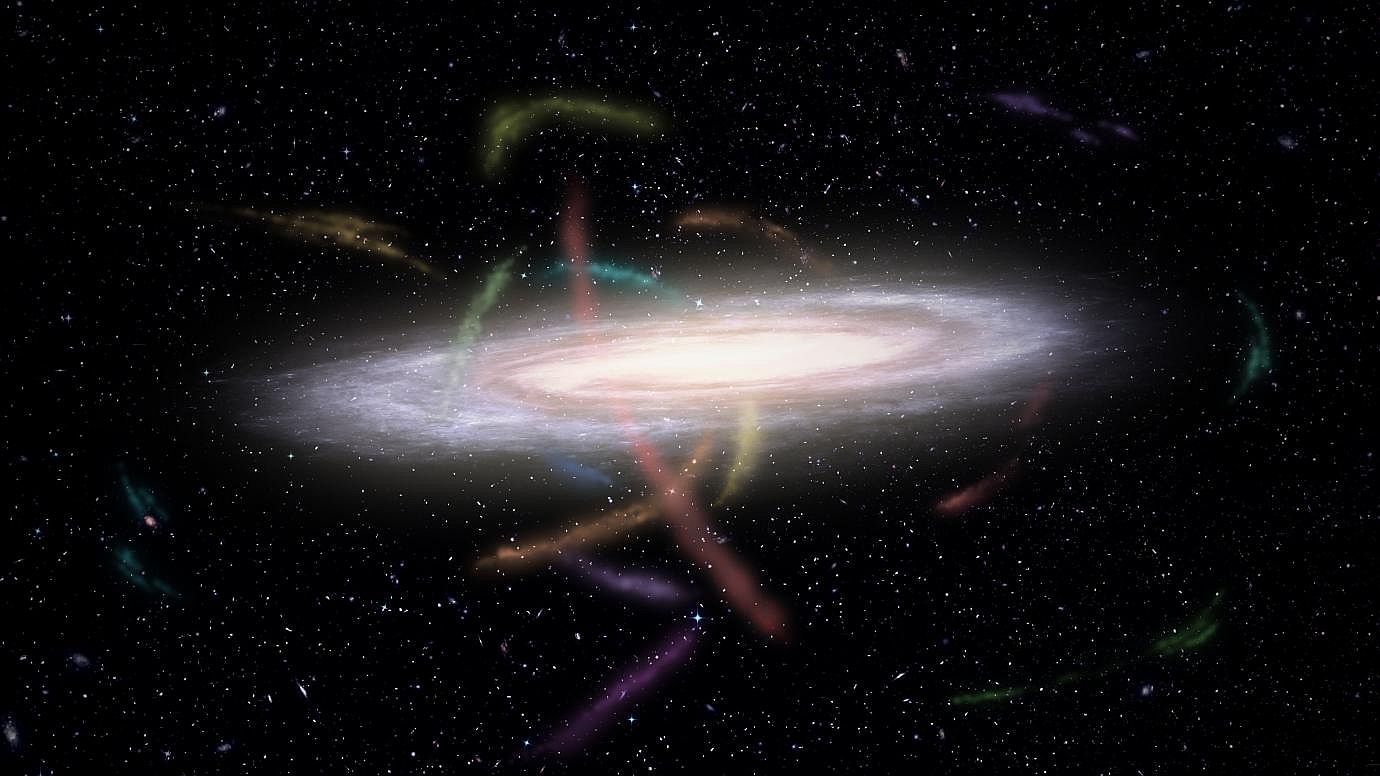
Understanding the properties of dark matter is the most important quest for astronomers. Many have dedicated their years to research just to take a sneak peek into what actually comprises of dark matter. In a recent research, astronomers have detected twelve streams of stars spiralling within the outermost region of our galaxy.
To gain an insight into these stars system is important because it will not only surface the dark matter but could also reveal the history of the conception of Milky Way, claimed the space scientists.
The galaxy that we see today is the product of billions of years of evolution. And in the process, it has ripped and ingested various small stellar bodies.
The “eating habits” of galaxy
As per University of Toronto Professor Ting Li, the observations indicate that gravitational pull of the Milky Way is causing the streams to disorient from the disc and ultimately submerging back within the galaxy itself. This phenomenon shows the kinds of smaller stellar bodies the Milky Way ingest during evolution.
To gain an in-depth understanding and measurement of stellar streams, Prof. Li collaborated with an international team of astronomers and created a program, the Southern Stellar Stream Spectroscopic Survey (S5). The undertaking specifically targets the ripped remains of left-over galaxies and star bodies that are disrupted by our Milky Way.
Stellar streams’ trajectory reveals the dark matter
Team used the Doppler shift of light to measure the speed of stars that are present in the collection of stellar streams. They employed the Anglo-Australian Telescope (AAT). The AAT is an equatorially-mounted telescope and, with a 3.9m-diameter mirror, is the largest optical telescope in Australia.
Additionally, the AAT is capable of not only monitoring one stream but numerous streams at the same time, commented co-author Prof. Daniel Zucker of Macquarie University.
Result of the properties of the stellar stream shows that Milky Way has an invisible dark matter at the backdrop. To make it understandable, co-author Prof. Geraint F. Lewis said, on a dark night, we do not see Christmas tree directly. We see the lights enveloping it and the shape of the light reveals the structure of the tree. Similarly, the trajectory of stellar streams surfaces the dark matter.

Also, the chemical composition of the stars can be determined by measuring their speed. This will direct the astronomers to the star’s origin. Usually, stars are born from either of the two bodies:
- One, by disrupting galaxies, or
- Two, star clusters.
Prof. Li postulates that with the new research parameters, they will be in a better position to understand how our Milky Way manifested from the featureless universe post Big Bang. The idea behind the formation of S5 is to have an international collaboration to address this question.
Takeaway
Scientists envision to inculcate more measurements on these stellar bodies that are scattered in the Milky Way. Within the next decade we would have more tangible data in hand that could lead researchers towards the proximity of the age-old question – what is dark matter!



